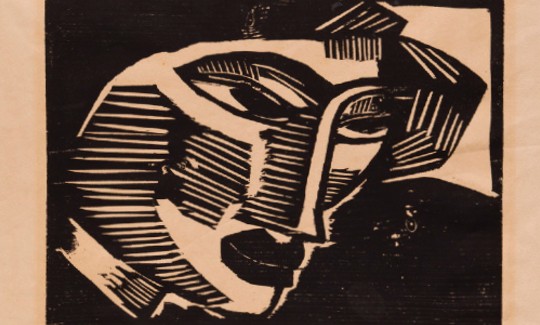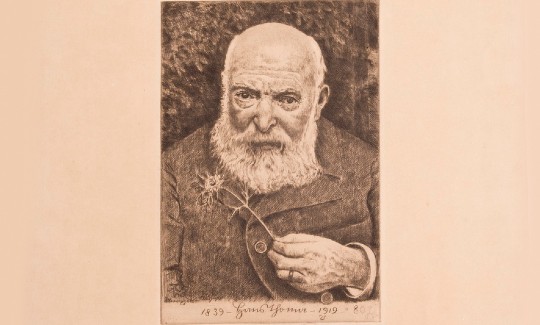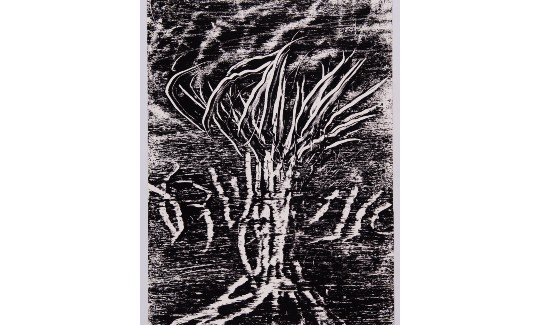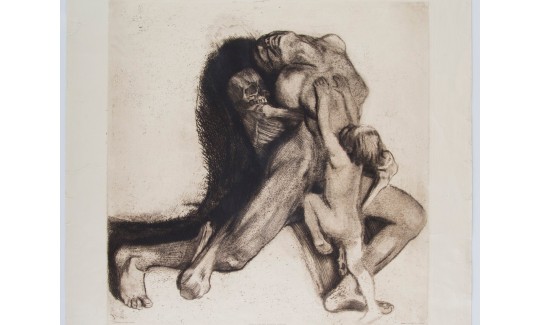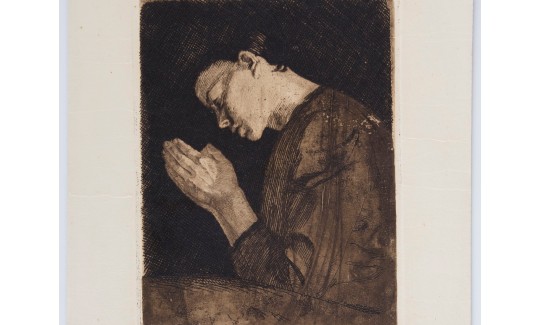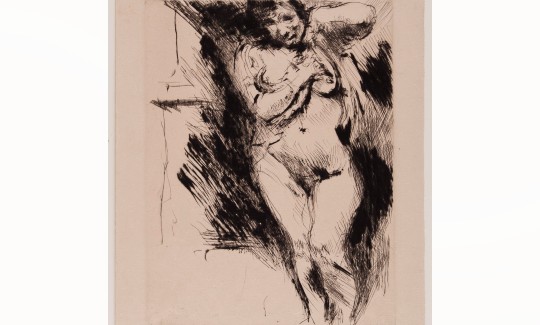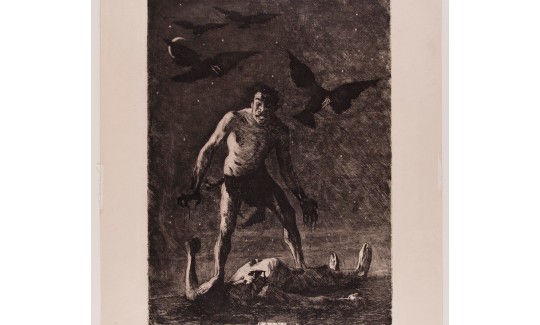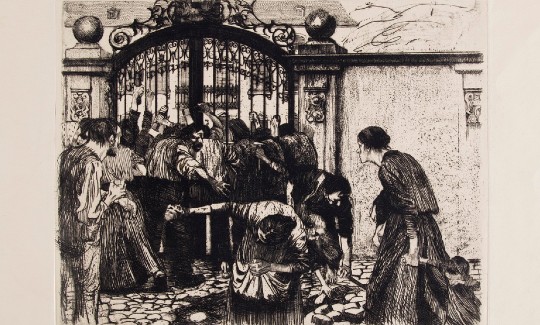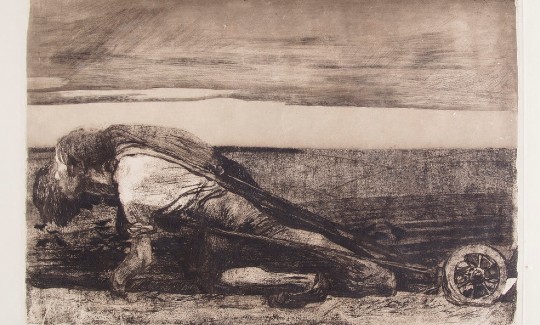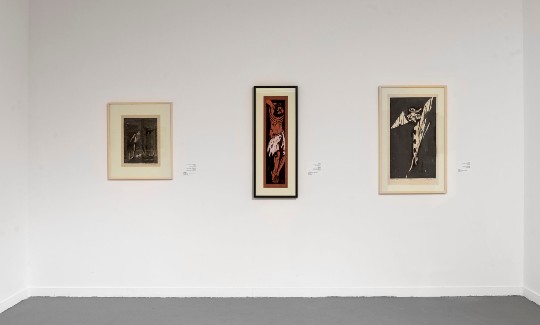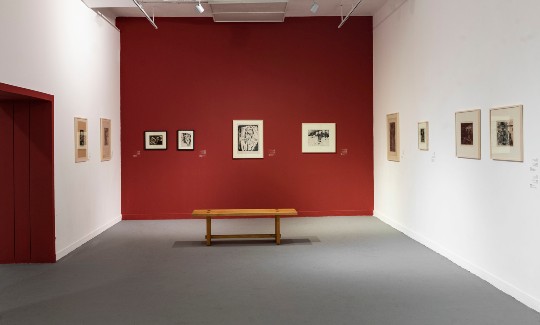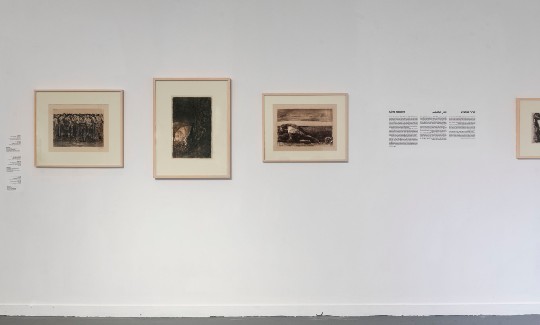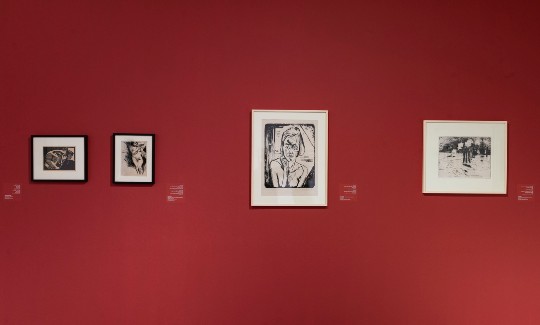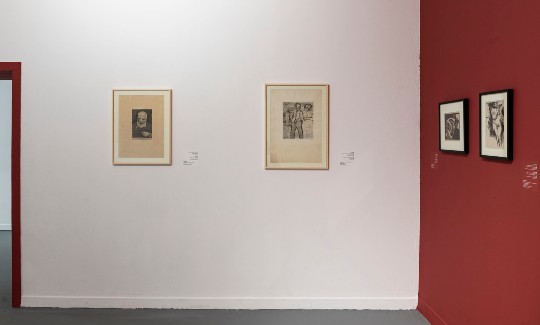
The exhibition focuses primarily on early 20th century prints by German artists, all from the museum's collection. Its title was borrowed from the Sturm und Drang movement - a literary movement in 18th-century Germany, emphasizing expression of the individual's deepest and most intense feelings on the assumption that the human psyche is dominated not by reason but by raw, stormy, and unexpected emotion.
This trend of turbulent visceral expression runs throughout the history of German art. Representations of form and body distortion, bodily gestures full of movement, and expressive facial gestures were intensified in the early 20th century, against the backdrop of existential fervency fueled by the boisterous social and political reality in Germany. In the prints created at the time, the tools used to incise the wooden or metal plates generate sharp, fidgety lines, like poking a wound that does not heal while exploring the dark aspects of man's life and soul.
In the early 20th century, and especially since the 1930s, German printmaking greatly influenced art in Palestine, which saw massive immigration of Jewish artists and intellectuals from Germany. Jacob Pins, whose works are on view in the exhibition, was one of these artists. Moshe Gershuni, who was born in Israel, delved into German Expressionism, and internalized its technical and conceptual principles in his work, stroking his brush, needle, or fingers on papers or etching plates, and complementing the gesture's intuitive sharpness with charged Hebrew texts. The plate is a platform for unrestrained expression of an internal storm, and at the same time - a response to some of the bloodiest wounds in Israeli life, including the Holocaust and the Lebanon War.

